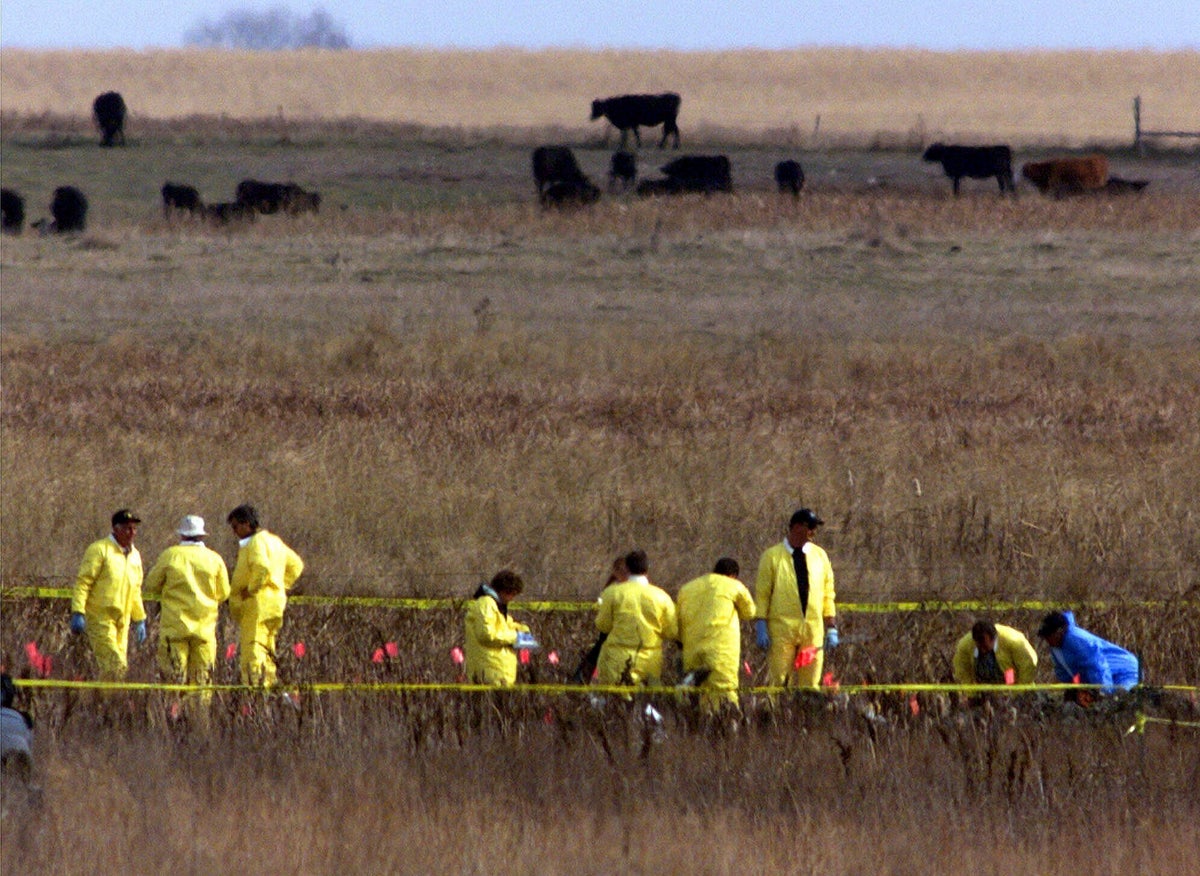
A loss of oxygen is a leading theory for why an unresponsive business jet flew over the nation’s capital Sunday before it crashed in rural Virginia. But federal investigators are just beginning to look for answers, and an expert cautioned against jumping to conclusions.
The Cessna Citation took off from Elizabethton, Tennessee, headed for Long Island's MacArthur Airport. Once over Long Island, it turned around and headed south, flying a straight path over Washington, D.C. before crashing in Virginia, k illing the pilot and three passengers.
The Sunday crash wasn’t the first time a flight ended up far from its destination under mysterious circumstances.
___
WHAT IS HYPOXIA?:
Hypoxia is the condition that occurs when someone’s brain is deprived of adequate oxygen. If untreated, it can be fatal.
In aviation, hypoxia can happen if a non-pressurized plane flies above 10,000 feet without supplemental oxygen or if there is a rapid decompression during a flight, or a malfunction of the oxygen or pressurization systems, according to the Federal Aviation Administration.
Oxygen pressure decreases as altitude increases. It’s the reason planes are pressurized and why mountaineers carry supplemental oxygen on high-altitude climbs. It’s also the reason flight attendants explain to passengers how to use oxygen masks in the unlikely event that cabin pressure is lost during a commercial flight.
___
THE EFFECTS OF HYPOXIA
“It's something that happens slowly. It’s almost like you’re getting groggy, and you just can’t, you can’t piece things together. And eventually you lose consciousness,” said Anthony Brickhouse, a former member of the National Transportation Safety Board who is now an associate professor and director of the Aerospace Forensic Lab at Embry-Riddle Aeronautical University.
Brickhouse said that aircraft are often set to fly on autopilot “so if the pilot goes hypoxic or loses consciousness, that aircraft is just going to fly whatever route it was programmed to fly,” he said.
Brickhouse said it's unclear why the plane suddenly turned around in New York and headed south again. He said it's possible the pilot was disoriented and may have “tried to reprogram a flight computer or something like that.”
“That's definitely something that investigators will be looking into,” Brickhouse said.
Brickhouse said it’s important not to jump to conclusions about what caused the sudden flight turnaround and the crash.
___
OTHER CRASHES INVOLVING HYPOXIA:
— One of the most well-known crashes involving hypoxia was the 1999 crash of a Learjet that lost cabin pressure and flew halfway across the country on autopilot before running out of gas and crashing in a South Dakota pasture, killing professional golfer Payne Stewart and five others.
— Among multiple theories in the 2014 disappearance of Malaysia Airlines Flight 370 carrying 239 passengers and crew was a slow or sudden decompression, causing a loss of oxygen, that could have killed everyone on board. If oxygen levels dropped, a loud, automated warning would have alerted the pilots to put on their oxygen masks and immediately descend below 10,000 feet, where there is enough oxygen to breathe without aid. But aviation experts said in that case the plane should have kept flying automatically toward Beijing and been visible on radar.
— Greek investigators said pilots on a Cypriot airliner did not realize an automatic pressurization system was set to “manual” when a loss of cabin pressure and oxygen led to hypoxia and the plane’s crash in Greece in 2005, killing all 121 people on board.
— In January 2018, Dr. Bill Kinsinger, of Edmond, Oklahoma, had been flying his Cirrus SR22T to Georgetown, Texas, to collect a disabled dog that was destined for a foster home in Oklahoma. But he never landed at the suburban Austin airport and overshot his destination by hundreds of miles. Authorities believe he may have lost consciousness due to hypoxia.
____
Finley contributed from Norfolk, Virginia.







